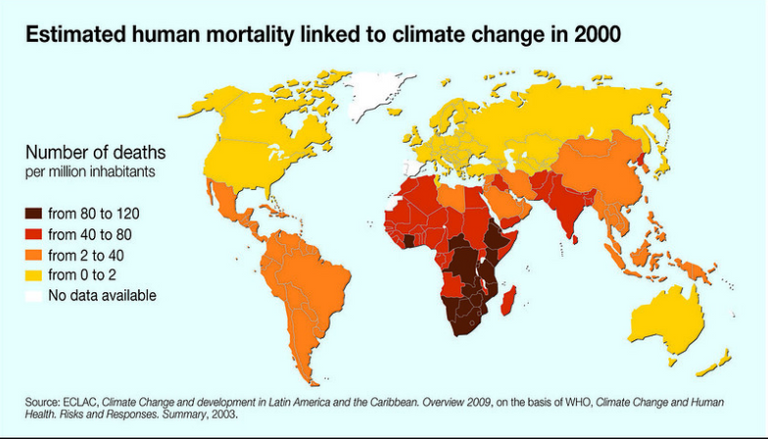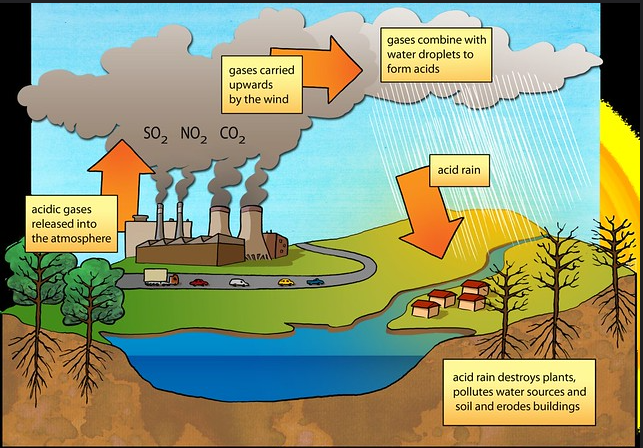Climate Change Beyond the Environment
Most times, when you hear about climate change, a quick image of the environment pops into your mind, right? That is because much emphasis has been laid on environmental hazards and their immediate effects in claiming lives and property, but it should interest you to know that there are health risks that stem from climatic changes over time. The effect of greenhouse gases and ozone layer depletion has had countless adverse effects on the climate and environment, but this, in turn, affects man because there is a constant transaction between man and the environment. In this article, I will outline how climate change increases health risks over time. Let's dig in shall we?

How it all started
The change in the global climate is closely tied to the temperature of the environment. In actual fact, most of the climatic factors are directly or indirectly tied to temperature. As little as a temperature change of a degree Celsius can cause cloud formation and precipitation to become erratic. The planet gets its warmth as a result of the activities of greenhouse gases that trap some of the reflected radiation from the sun by the earth.
However, an increase in the anthropological emission of greenhouse gases means that more radiation is trapped into the atmosphere and more warmth for the mother earth. Thus, a gradual increase in the global temperature has been occurring as more and more greenhouse gases are emitted into the environment.
Climate change has inadvertently become a global challenge and its impact goes beyond temperature extremes and precipitation changes in the environment. Contributing factors such as greenhouse gases and ozone layer depletion continue to alter environmental conditions such as temperature, humidity, and precipitation rates, the alteration directly or indirectly affects humans.
Impact of temperature extremes on health
Hot and cold temperature extremes have the tendency to reduce productivity because let us face it, no one is going to work under the scorching sun or extreme cold. Extreme temperatures also have the tendency to increase the mortality rate. In 2003, a heatwave hit India and claimed more than 1,900 lives within a period of three weeks. This is an immediate effect of exposure to very hot temperatures. Some of the ill-heaths that led to this outrageously high mortality rate include heat strokes, heat exhaustion, or other pre-existing chronic conditions that may be intensified by heat. Extremely cold temperatures lead to frostbites, snow blindness, and mortality in the long run.
Vector-borne diseases
There are many ways through which diseases spread, vectors are one of those channels and climate change may affect the occurrence and distribution of these vectors through migration or breeding. Arthropods or insects are essential in transmitting infections like malaria and trypanosomiasis, from one host to another, the host could be human or animal, but the availability of these vectors determines how many people get infected.
Precipitation may increase or reduce the abundance of vectors since they require water for the survival of their larva. So, an increase in rainfall will increase their survival while excess rainfall will eliminate their habitat by flooding. Low rainfall can also limit the habitat for their breeding as people are forced to store up water.
Water-related diseases
Water is an essential part of life, its quality is dependent on its availability. Therefore, it is easy to get water-related diseases in places where clean water is not easily accessible, forcing people to consume water from any source. Fecal-orally transmitted diseases commonly require water as a mode of transmission. The ingestion of contaminated water that contains pathogenic bacteria or viruses could cause quite a number of diseases.
Water-borne diseases like cholera, dysentery, and typhoid are transmitted through the ingestion of contaminated water. Water-washed transmission through direct contact with contaminated water could lead to diseases like leprosy, scabies, or conjunctivitis. Another form of water-related disease transmission is through parasites that are found in intermediate aquatic organisms. These parasites cause diseases such as schistosomiasis and dracunculiasis.
Acid Rain
Any form of precipitation with a pH level lower than 5.2 is said to be acidic. This precipitation comes with accompanying acidic components such as sulfuric or nitric acid. The acids are formed by the dissolution of their oxides in moisture. The acidic rain then falls to the ground from the atmosphere in wet (rain or snow), or dry forms(dust). In addition, the nitrogen oxides that create acid rain promote the formation of ground-level ozone on the earth surface While ozone above the Earth helps block ultraviolet radiation, ground-level ozone promotes severe lung problems like chronic pneumonia and emphysema
Extreme weather conditions are no joke, they have the tendency to increase respiratory or cardiovascular diseases, among many others. But in addition to these health challenges that may develop or intensify as a result of climate change, there are other situations that may arise as ripple effects of climatic disasters. Most of these catastrophic events challenge such as poor standard of living from drought and famine, power outages in hospitals where power is required for the support and care of patients. People who have lost loved ones as a result of these disasters, or have survived one catastrophe or another often have to deal with depression, anxiety, and other mental health-related issues.
The information outlined above can be overwhelming, but the good news is that with proper preventive measures, the number of casualties from these events can be reduced to the barest minimum. These preventive measures include early warning and response systems for infectious diseases, based on forecasts from previous temperature, precipitation, and other environmental data, to identify any possible factor that can lead to outbreaks, providing more time for the implementation of vector and disease control programs and increase public awareness, and thereby reduce the magnitude of the outbreaks.

Another preventive measure is the implementation of policies regarding public health that will ensure that vulnerable populations are protected.
Conclusion
Finally, I should point out again that the effects of climate change go beyond disasters. They are accompanying long-term damages which result from climatic and environmental disasters. Remember to recycle where you can, plant a tree and not just save the environment but save yourself as well.
This is a really interesting article. I like all your examples of acid rain and heat waves. I have another more unusual example. In November 2016, in Melbourne Australia there was one of the worst Asthma thunderstorms in history. It is believed the weather conditions just before a storm triggered an extremely high concentration of micro pollen particles, that caused widespread respiratory illness. Sadly this contributed to upto 10 deaths in a single day. Its surprising how vulnerable we actually are and are at the mercy of the weather.
That is a sad one, I am just getting to know if it. It tells us how devastating climate change can be to humanity. Yet, governments and corporations still think it is all a ruse.
Thanks for your contribution to the STEMsocial community. Feel free to join us on discord to get to know the rest of us!
Please consider supporting our funding proposal, approving our witness (@stem.witness) or delegating to the @stemsocial account (for some ROI).
Please consider using the STEMsocial app app and including @stemsocial as a beneficiary to get a stronger support.